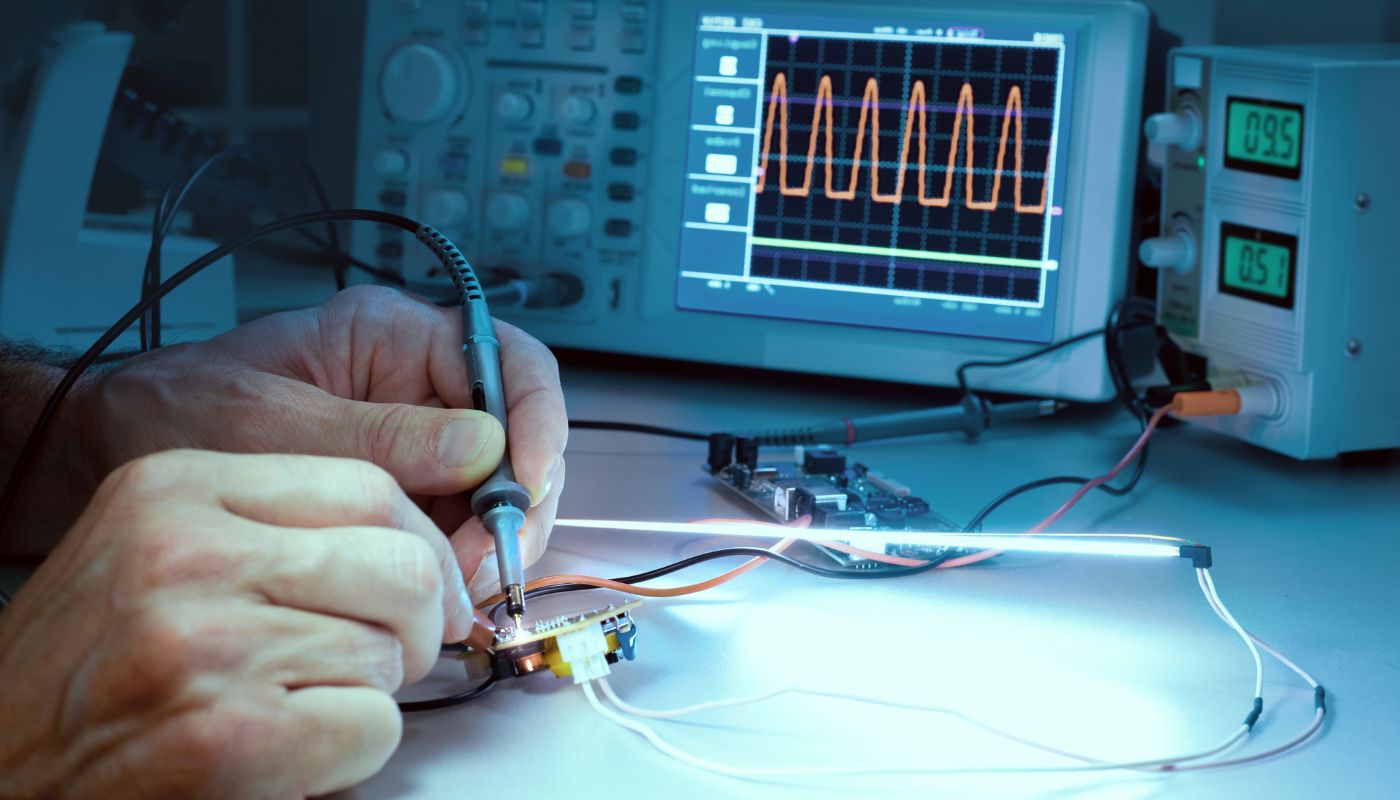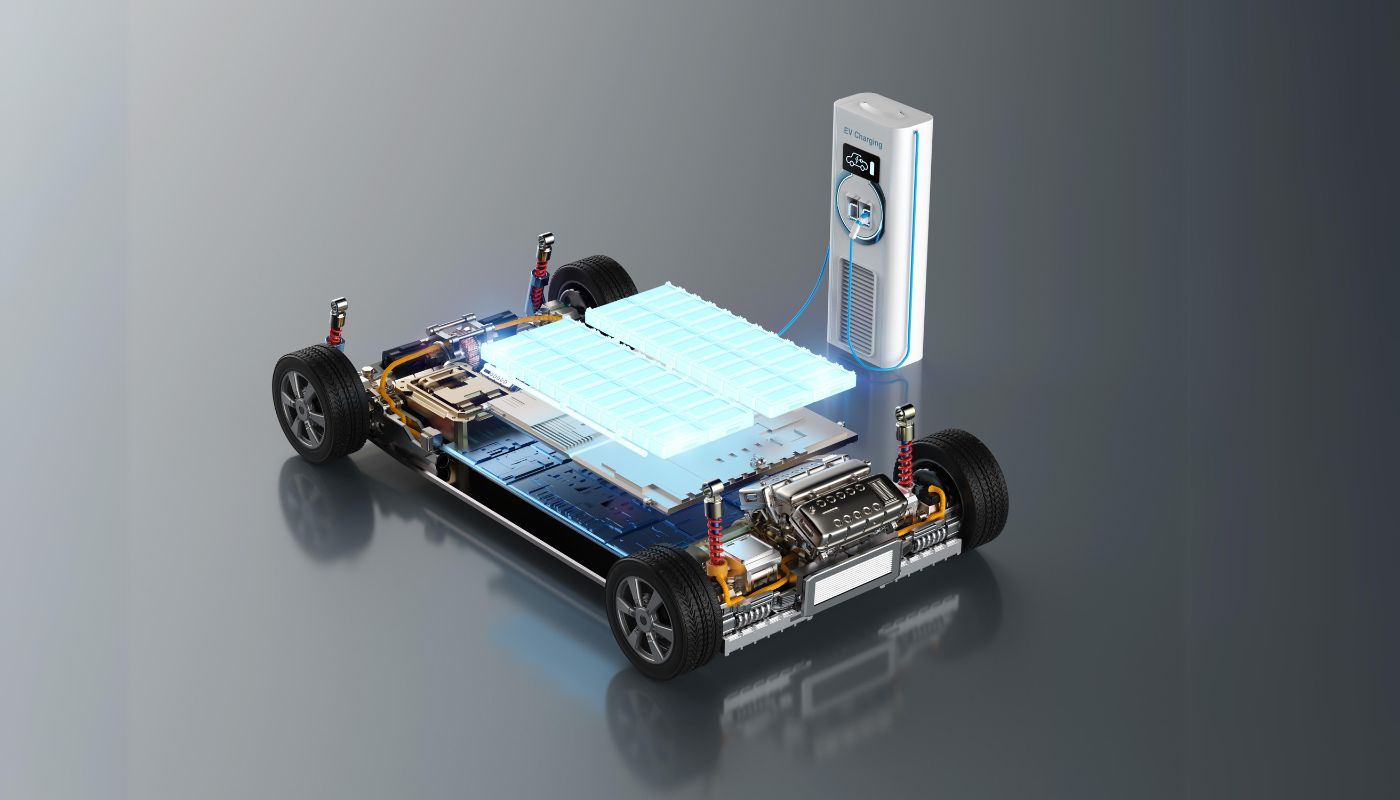Blog
Welcome to our blog, a platform for sharing cutting-edge insights and expertise in power design and testing. We are dedicated to offering in-depth analysis and practical guides on power equipment, renewable energy technologies, industrial automation, and electric transportation. Through our posts, you'll discover the latest trends, technological innovations, and best practices, helping you stay competitive in this fast-paced industry.
Basic Knowledge of Power Testing

10 Essentials of AC/DC Load Simulation for Power Electronics and EV Testing
AC/DC load simulation has thus emerged as an essential technology in modern power electronics. These simulators provide engineers with dynamic, composite, and repeatable AC or DC loads, supporting constant current (CC), constant voltage (CV), constant power (CP), and dynamic load modes. Combined with advanced digital control, PWM, real-time feedback algorithms, and automated test software, they bring unprecedented flexibility, efficiency, and data reliability to engineering teams.

Choosing the Right Programmable DC Power Supply: A Practical Guide to Power, Output, and Performance Criteria
Learn how evolving DC supplies offer higher power density, improved output performance, and seamless automation features to meet the growing demands of EV, solar, aerospace, and industrial testing environments.

What Is Crest Factor? Comprehensive Guide to Waveform Analysis & Applications
Understand why crest factor is important in waveform and signal analysis. Learn how peak amplitude, average value, and power factor influence AC power source performance and effective signal processing.

Harmonic Testing: Enhancing Power Quality
Explore how InfiniPower’s advanced harmonic testing services improve power quality, extend equipment lifespan, and reduce operational costs. Learn more about our expert solutions and discover detailed insights on power testing.

What Is Programmable Impedance?
Unlike fixed impedance sources, programmable impedance devices enable engineers and technicians to modify impedance values in real time. This capability is critical for advanced power testing and simulation, where accurately replicating real-world electrical environments can validate device performance and ensure compliance with international standards.

Introduction to Programmable Impedance in AC Source
Programmable impedance in an AC source refers to the ability to adjust the output impedance—the opposition to current flow—in an alternating current circuit. This feature is crucial for power testing equipment because it allows engineers and technicians to simulate various electrical environments and test device performance under diverse load conditions.

Benefits of Constant Voltage, Constant Current, and Constant Power Modes in DC Power Supplies: A Comprehensive Analysis Abstract
DC power supplies are indispensable in modern electronics, offering stable direct current to devices that require precision and safety. The ability to operate in multiple modes—constant voltage (CV), constant current (CC), and constant power (CP)—enhances their versatility for varied applications ranging from microprocessor powering to photovoltaic testing.

Understanding Three-Phase Voltage for AC Power Source Selection
Three-phase voltage is a cornerstone of modern electrical systems, powering everything from industrial machinery to renewable energy installations. Unlike single-phase systems—common in residential settings—a three-phase system uses three alternating currents that are offset by 120° from each other.

Empowering Precision: How Constant Current Technology Transforms Charging Equipment Testing
Constant current technology is at the heart of this process—ensuring that charging systems operate stably under variable voltage conditions while minimizing risks such as overload and overheating.

Next‑Generation Grid Mastery: Unraveling Four‑Quadrant Simulation and Its Applications
Traditional grid simulators are no longer sufficient to meet the demands of contemporary power testing. This has paved the way for the emergence of Four-Quadrant Grid Simulation, a cutting-edge solution known for its bidirectional control capabilities and energy feedback features.

Deep Dive into Power Testing: Principles, Industry Applications, and Ensuring Compliance and Stability
Power testing involves using various testing equipment and techniques to assess and verify the performance, safety, stability, and compliance of electrical equipment. This process spans the stages of product development, production, installation, and maintenance to ensure reliable operation in real-world environments.
Power Testing Regulations

IEC 61000-4-11 Explained: EMC Immunity Test Techniques for AC Power Systems
One of the most critical among these is IEC 61000-4-11, a standard designed to test equipment’s immunity to voltage dips, short interruptions, and voltage variations on the AC power input.

Modern Power Systems & IEC 61000‑4‑13: Strengthening Immunity Against Switching Transients
This article provides an in‑depth review of IEC 61000‑4‑13, examining its technical requirements, the rationale behind the test parameters, and the methods used to simulate realistic switching events. In addition, best practices, industry case studies, and future trends in EMC immunity testing are discussed.

A Comprehensive Analysis of IEC 61000-4 Standards for Ensuring Compliance in Power Testing:
Ensuring the reliability and robustness of power testing equipment is crucial in today’s rapidly evolving industrial landscape. The IEC 61000-4 standards, including IEC 61000-4-11 and IEC 61000-4-34, provide detailed guidelines for evaluating the performance of electrical and electronic equipment when subjected to voltage dips, interruptions, and other transient disturbances.

Ensuring Reliable Power Quality: The Role of IEC 61000-3-11 in Electrical Design
Discover how IEC 61000-3-11 addresses power quality issues and what design considerations help maintain stable and reliable electrical systems.

Controlling Harmonic Distortion: Best Practices Under IEC 61000-3-3
IEC 61000-3-3 provides the framework for limiting harmonic distortion in electrical systems to ensure proper electromagnetic compatibility (EMC) and maintain power quality. This article delves into the fundamental concepts of harmonic distortion, explains the key requirements of IEC 61000-3-3, and offers practical engineering strategies to control and mitigate harmonic distortion.

Understanding SAE J1772: Technical Insights for Charger Testing
Explore the technical fundamentals of SAE J1772—the North American standard for EV conductive charging. Our comprehensive guide covers electrical specifications, connector design, test procedures, and detailed historical insights. Discover advanced testing workflows and internal resources from Infinipower.

A Comprehensive Guide to the IEC 61000 Series in Electric Vehicle (EV) Testing
This article offers an in-depth look at the basic concepts and components of the IEC 61000 series, its application in EV testing, and a comparison with other international standards.
Learn More About Model G
Model G: Experience exceptional power testing performance! Whether it's new energy, electric vehicles, or complex industrial applications, Model G delivers precise, stable, and reliable testing solutions. Contact us now for more information and give your R&D and production a powerful boost!
Power System Applications

How Smart Grids Achieve Energy Savings Through Data Analysis
Smart grids harness data analysis to achieve significant energy savings by optimizing energy distribution, predicting equipment failures, reducing transmission losses, and providing user-side energy optimization. Although challenges such as data security, standardization, and high initial costs persist, technological advancements and global collaboration promise a bright future for smart grids.

Key Technical Requirements for DC Power Testing
To ensure that DC power supplies remain stable and reliable across various applications, engineers conduct several key tests. These tests focus on verifying voltage stability, dynamic response, ripple and noise levels, and overall reliability under extreme conditions. Each type of test checks how well a DC power supply can handle different loads and challenging situations.

Automotive Ethernet Testing in the Electric Vehicle Industry
The Importance of Automotive Ethernet in Electric Vehicles As the automotive industry rapidly moves toward electrification and smart systems, the in-vehicle communication networks in electric vehicles (EVs) face increasingly complex demands. Traditional bus systems like CAN and LIN, once sufficient, now struggle with the massive data needs brought by advanced driver assistance systems (ADAS), infotainment
Learn More About Model S
RPS-5000S supports 30kVA–225kVA high-power and efficient AC/DC capabilities, along with single-phase, three-phase, and split-phase outputs. It supports AC, DC, and AC+DC modes, with a modular design featuring 7 synchronized DSPs for arbitrary waveform simulation, power line interference simulation, and harmonic disturbance synthesis. Suitable for R&D and production testing of large power equipment such as aerospace, marine, large servers, medical, infrastructure, and industrial power systems for performance and safety validation.
Power Measurement Instruments

The Impact of SiC MOSFETs on High Efficiency and Constant Power Output
Explore how SiC MOSFET technology is revolutionizing modern power electronics by delivering high efficiency and stable constant power output. This article by Jonathon C. Woo covers an overview of SiC MOS processes, key performance advantages, stability challenges, practical applications, and future trends in power electronics.

The Role of Signal Generators in a Complete Measurement System
Coordinating Signal Excitation and Acquisition Instruments Signal generators play an indispensable role in test and measurement systems. In modern electronic and power testing environments, these devices provide a stable, controllable source of excitation while synchronizing with acquisition instruments (such as oscilloscopes and data acquisition systems) to capture and analyze device responses. This article provides a

How to Choose the Right Electronic Load Equipment for Renewable Energy Applications: Types, Uses, and a Comprehensive Selection Guide
As the world transitions to new energy sources, power systems play an increasingly central role in the energy transformation process. Whether it’s electric vehicles, renewable energy generation, or energy storage systems, these technologies depend on stable and reliable power management. To ensure optimal performance under various operating conditions, electronic load devices are essential tools in